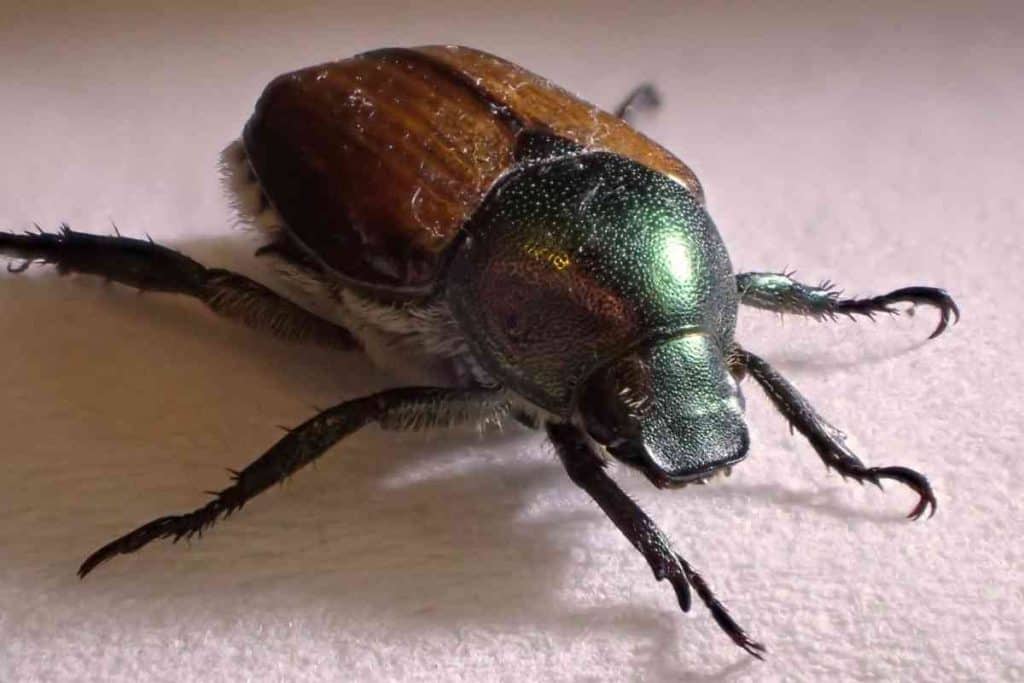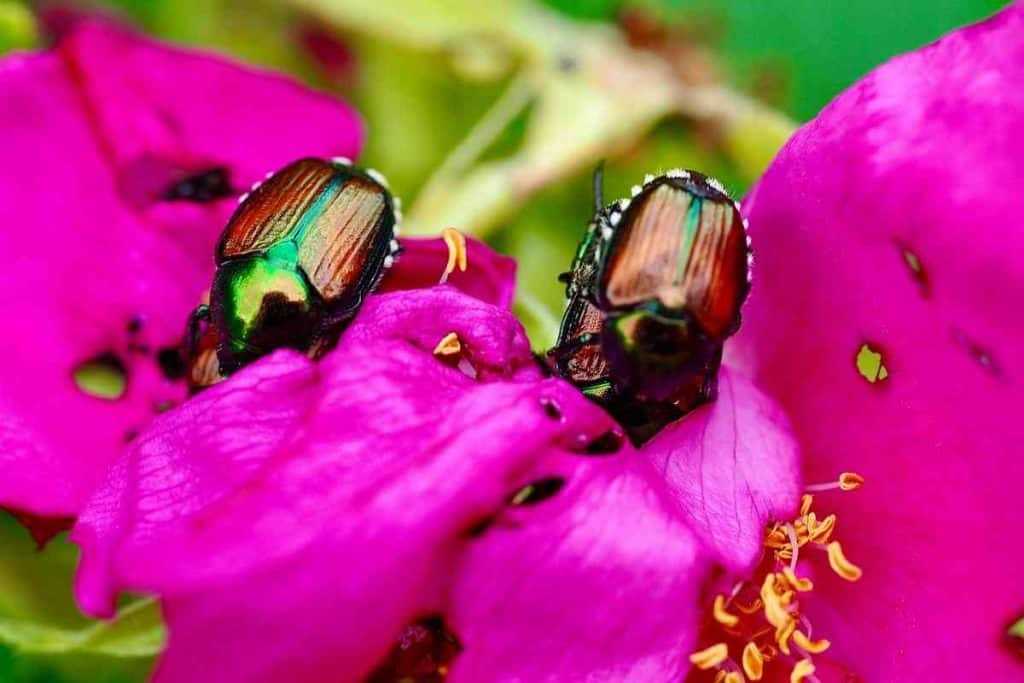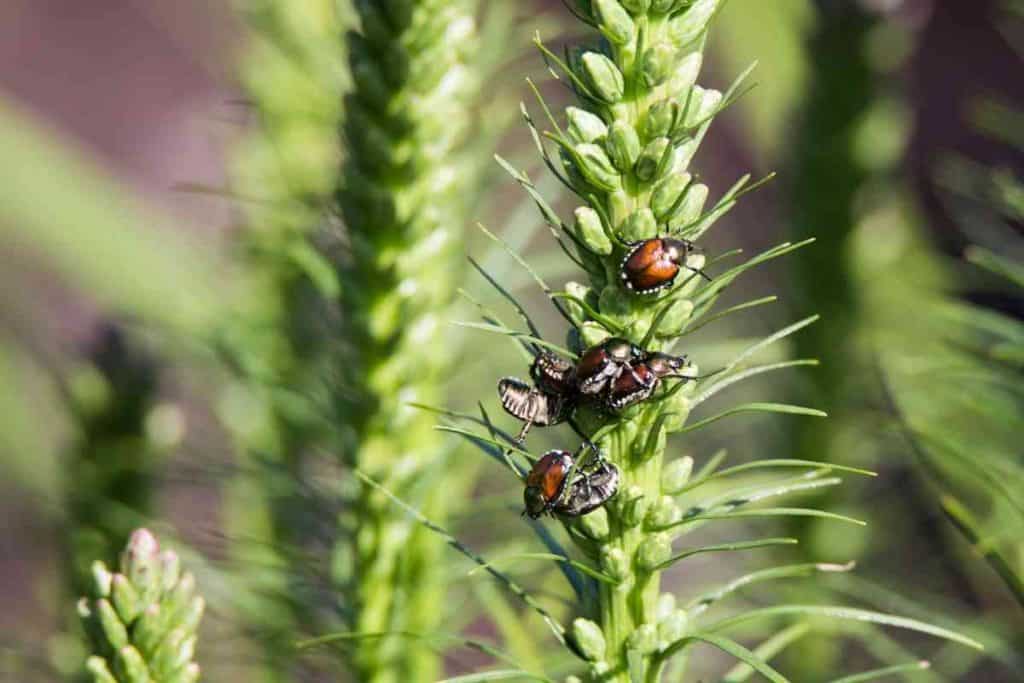Whether you are faced with Japanese beetle infestation or curious about them, you need to know when they are most active.
They are huge, and you can always find them in yards and gardens across the states during the daytime. But where do Japanese beetles go at night?
Japanese beetles go to their underground nest for hiding at night. Every worker needs to retire to bed after a hard day's job, and so do the Japanese beetles. After their activities in the morning and daytime, they will retire in the evening and head towards their nighttime nesting location, which is underground to sleep.
We'll shade more lights on this shortly!
Table of Contents
What Are Japanese Beetles?

Native to Japan and other regions of Asia, Japanese Beetles are small, green, copper, and brown insects yet are very invasive and destructive species that can be difficult to control. You can also find them in countries and continents worldwide, including America, Canada, Europe, and some parts of Africa.
Scientifically known as Popillia japonica, the Japanese beetles come from the Scarabaeidae family. They are kept unleashed by their natural predators, unlike in North America, especially the East and Mid-west, where there are no predators. Instead, they have developed into devastating pests to numerous crops, flowers, trees, and shrubs.
You can mostly see these insects in the summer and fall, particularly from early July to mid-September, where you can find them hiding in lawns and plants. They can adapt to virtually every area and build their homes anywhere, including landscapes, as long as the area has some foliage to feed on.
The Japanese beetles tend to dig deep into the soil or hide in-between grasses at night. You can also find them hiding among organic matters like leaves and bark. After their destructive activities of the day, they are sure to retire at night to where they build their nest.
Where Do Japanese Beetles Go at Night?
This question does not need beating about the bush, as it has a very straightforward answer.
If you are often curious about where Japanese beetles go at night, the simple answer is that they always go back to the nest they built underground, where they go to sleep after their invasions and destructive activities of the day.
Just like humans retire to their beds after a day's stressful work, so do Japanese beetles find their way to their underground nests.
They like to be out and go around during warm days from late spring to mid-August and then find their nest in the evening. If you happen to find any beetle still feasting at night in this season is probably the Northern Masked Chafers.
Are Japanese Beetles Active During The Night?

No, they are not. As we earlier discussed, the Japanese beetles are most active in the daytime, then will retire to their nest underground in the evening to rest all through the night, specifically close to thick, protective foliage.
You will hardly find Japanese beetles active at night since they often eat in the morning and afternoon. You'll probably find some still hanging around when the sun is setting, but you'll hardly find any once it is past that period.
What Time of the Day Do Japanese Beetles Come Out?
Generally, the Japanese beetles come out most often between 9 am and will become active till around 3 pm, when they'll start becoming less active and find their way to their nests.
In other words, they like eating and traveling during brighter hours, which explains why you hardly see them during the night.
What Season Are Japanese Beetles Most Active?
Often, Japanese beetles are active in summer, which is between mid-June to mid-August, during the dropping hours of the temperatures. This is the period you can deal with them if you see them as summer bugs.
Also, Japanese beetles can only live for two months; hence, there is nothing to worry about since the same group won't be returning next year.
What Kind of Weather Do Japanese Beetles Like?

The Japanese beetles will come out immediately if they find the temperature at 70 degrees. However, they like it most when the temperature is around 85 to 95 degrees Fahrenheit when the weather is much warmer. Since they are summer species, they will be more active when the climate is hotter.
Where Do Japanese Beetles Go During Winter?
Generally, Japanese beetles tend to die or overwinter inside the soil as larvae. Immediately after the emergence of the first frost, the species will go deeper into the ground, probably 2 to 8 inches deep, to find a warm area. But will eventually die off as the ground gets colder.
Adult Japanese beetles die after 2 months, lasting only through the summer. Then comes the winter, and you would no longer see them. However, any adult beetle that still lives after the summer will try to reproduce and nest with its larvae until it warms up.
Here's what you can read next:
- Beetles That Look Like Cockroaches
- Do Bees Like Forget-Me-Nots?
- Bugs That Look Like Cockroaches But Aren’t
- How To Get Rid Of Gnats In Pothos (5 Direct Approaches)




